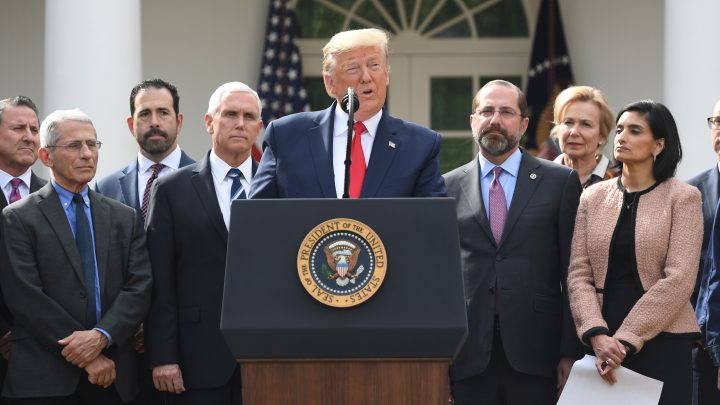
Trump declares national emergency over COVID-19

President Donald Trump declared a national emergency in response to COVID-19 during a press conference Friday, using the Stafford Act, and announced that up to $50 billion would be available in federal funds.
In his address, Trump also said he would waive interest on student loans and that the United States would buy “large quantities of oil” to fill the country’s Strategic Petroleum Reserve.
Under the Robert T. Stafford Disaster Relief and Emergency Assistance Act, the Federal Emergency Management Agency is able to provide disaster relief funding and federal assistance to states and local governments. FEMA has more than $40 billion in federal funding available for disaster relief.
Congress and the White House have also signed off on $8.3 billion in emergency funding to combat the virus.
Earlier this week, the World Health Organization officially declared COVID-19 a pandemic. There are now more than 137,500 cases worldwide and more than 5,000 deaths. In the U.S. alone, there are more than 1,600 confirmed cases and 41 deaths.
RELATED
- All our coronavirus coverage, in one place.
- Read more about the economic powers Trump has at his disposal.
Trump has invoked the Stafford Act in the past, declaring emergencies in response to wildfires in California, and storms and hurricanes in areas like Louisiana and Georgia.
When it comes to previous virus outbreaks, President Bill Clinton had declared a state of emergency in response to the West Nile virus in New York and New Jersey in 2000.
Between 1953 and 2014, an average of 35.5 major disaster declarations were issued by presidents under the Stafford Act and its predecessor, the Disaster Relief Acts, according to New York University’s Brennan Center for Justice.
Only presidents can declare a disaster under the act. Before 1950, state and local governments had to wait for authorization from Congress, according to a report from the Congressional Research Service.
Use of the Stafford Act has drawn criticism, with some saying that presidents are more likely to issue declarations during a presidential election year (and the year prior), according to the CRS report.
But the report says that while the data does indicate a “slight increase in the number of major disaster declarations” during presidential election years, they found “there are more nonelection years in the sample than election years, which may skew the results.”
There’s a lot happening in the world. Through it all, Marketplace is here for you.
You rely on Marketplace to break down the world’s events and tell you how it affects you in a fact-based, approachable way. We rely on your financial support to keep making that possible.
Your donation today powers the independent journalism that you rely on. For just $5/month, you can help sustain Marketplace so we can keep reporting on the things that matter to you.


















